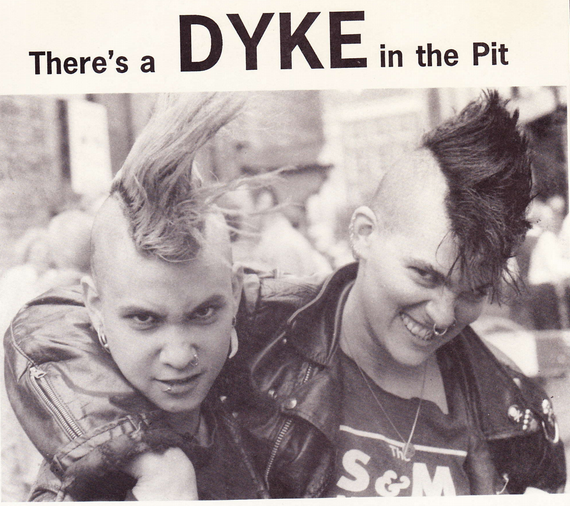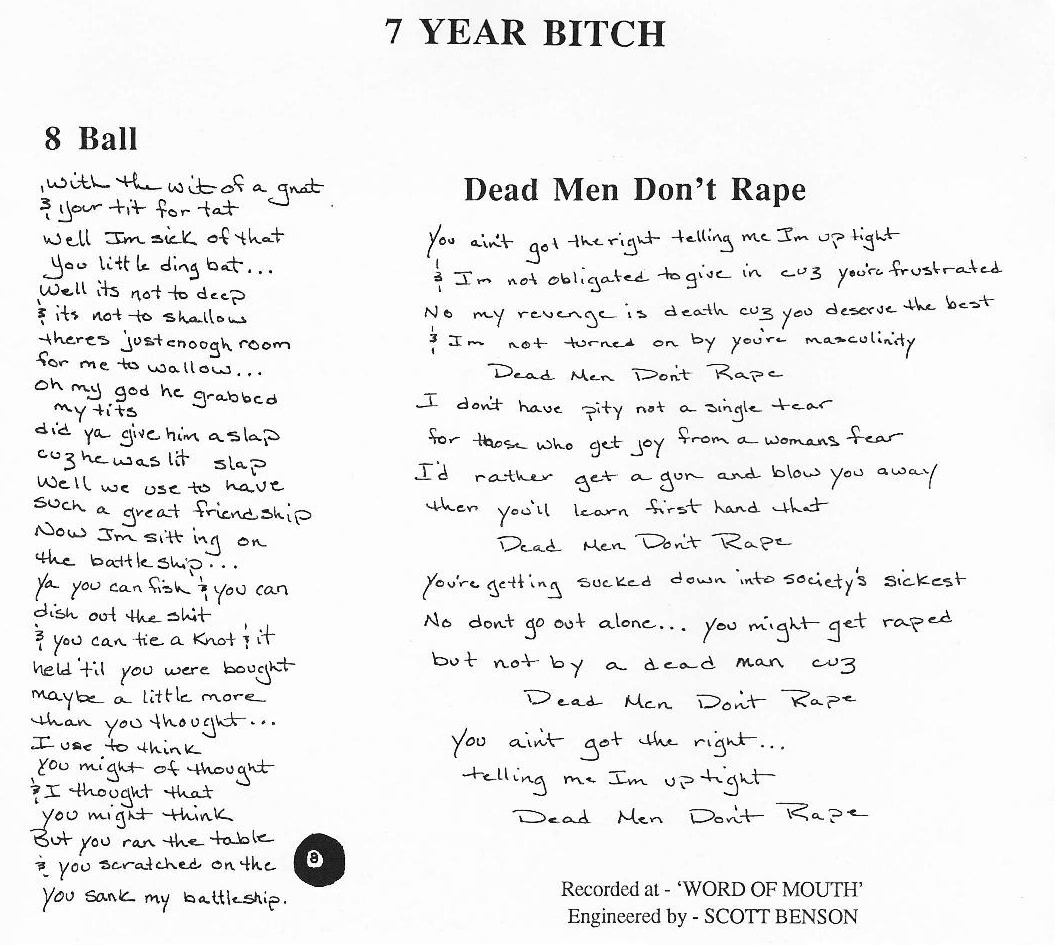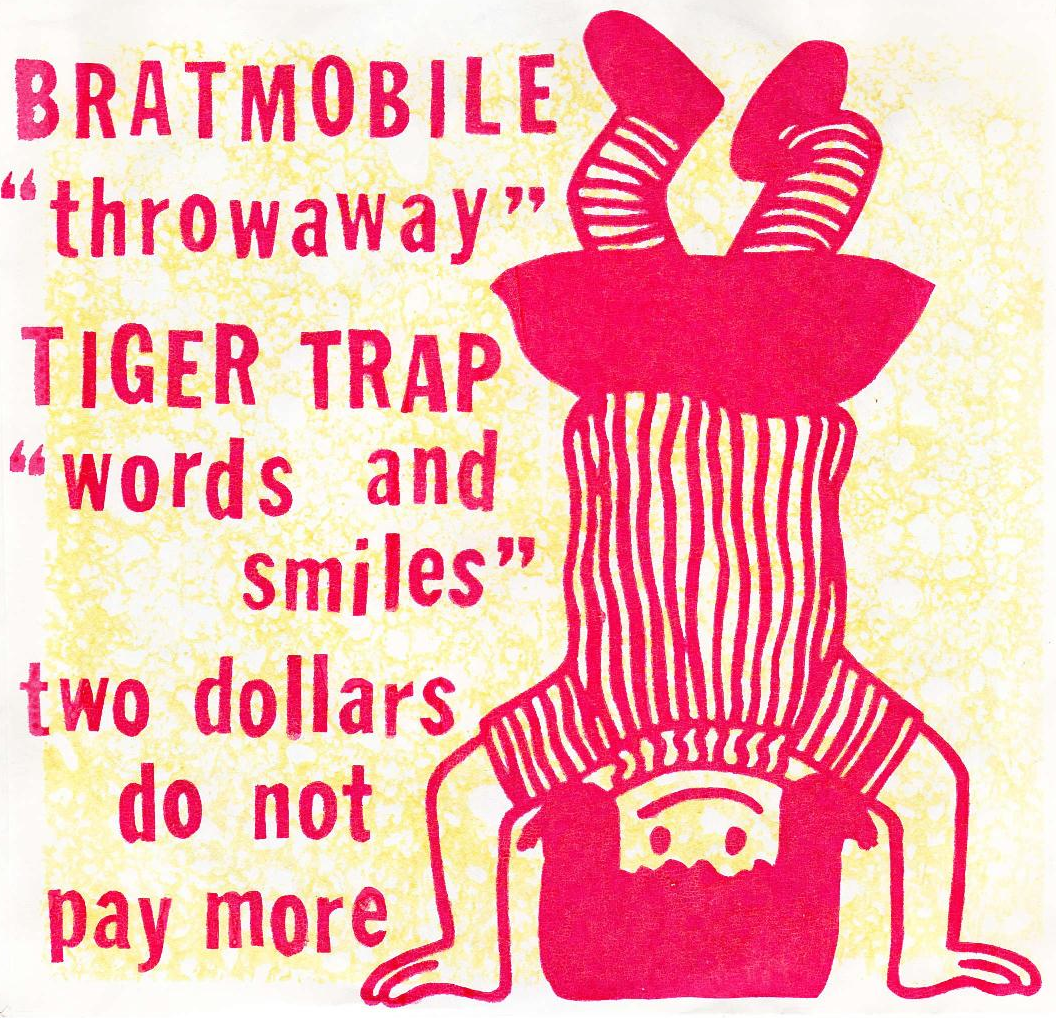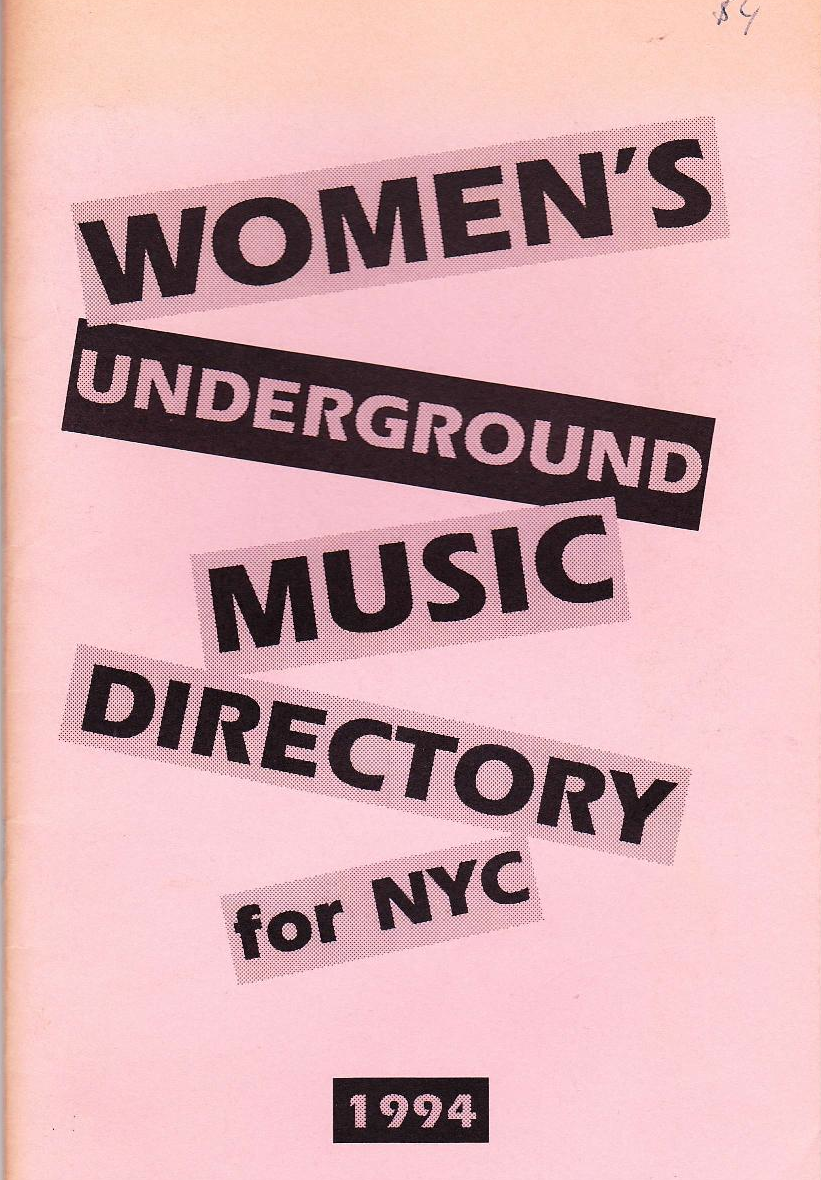(Radio) Revolution Girl-Style Now!

Image: “There’s a Dyke in the Pit” 7″ compilation, Outpunk Records, 1992.
[Text: Gayle Wald and Joanne Gottlieb]
WPRB’s “Ladies First” aired Monday nights at 9 PM beginning in the summer of 1992. The original idea was for a show that featured female artists and that interrogated what “women’s” music could sound like. It was one a few radio shows in the New York-to-Philadelphia area that routinely featured music from the burgeoning Riot Grrrl movement of women in indie rock. The title of the show was taken from a track by Queen Latifah and Monie Love on Queen Latifah’s groundbreaking debut LP, “All Hail the Queen”. The original promo invited lady listeners to tune in and “liberate your radios!”
DOWNLOAD: 11 Page PDF of Ladies First playlists from 1992
LISTEN: “Ladies First” promo #1
Below is the transcript of a conversation between co-hosts Gayle Wald (Grad ’95) and Joanne Gottlieb (Grad ’02) about the show and its origins.
Gayle Wald: Joanne, how do you remember getting involved with “Ladies First” and WPRB?
Joanne Gottlieb: I got involved with WPRB in the spring of 1990 – my friend and fellow grad student Christian Perring suggested we do the training for the station/FCC license together, and we started doing our respective shows that summer. As an undergrad, I had had a boyfriend who was a college radio DJ, and doing college radio seemed like one of the coolest things you could do, short of being in a band yourself. Doing the WPRB training was also a way to spend more time with Christian, on whom I had a big crush. (We got together that spring.) I guess my involvement with music has always had a big connection to the men in my life.

I remember running into you in the student center sometime after that, and you spoke about wanting to do a specialty show featuring women artists. I forget where you were in the process of establishing a show – I think you were doing the station training, is that right? – and I think you approached me because you knew I had been DJing at the station.
I really resonated to the idea of a women’s show. I knew I definitely didn’t want to focus on what was called “women’s music,” which seemed too earnest and specialized. But I struggled a lot at the time with the alternative rock music that predominated at the station: I was attracted to the cool factor, but the truth is a lot of it didn’t speak to me – it was loud, aggressive, and presumably testosterone driven. My experience really changed when it was made by women – at that moment it would have been bands like The Breeders or PJ Harvey, or hip hop like Salt ‘n’ Pepa. Then I could really relate. What motivated you to do a radio show?
GW: I had forgotten about Christian!
I had been studying feminist theory with Diana Fuss. We were learning about gender essentialism (the idea that there is an inborn essence of femininity or masculinity), and one day when I was listening to the radio–to a “women’s music” show broadcast from Philadelphia–I had an epiphany. It went something like: Why is all this “women’s” music acoustic? Why is it “pretty”? Why does it seem to be made by white women exclusively? I decided there had to be a better way of representing and exploring femininity sonically. I went to the radio station, told them I wanted a show, and was made to take a test. I think I probably got 5% right.
Later, I came to know more about the history of women’s (or womyn’s) music, and understood that there was a tradition of lesbian popular music associated with festivals like the one held annually in Michigan. The radio program I had been listening to was part of that tradition. So my initial critique was uninformed by a sense of how lesbians (primarily but not exclusively white) had used music to create lesbian spaces and culture in the 1970s.
I also remember the WPRB studios as a giant music playground. The studio was stuffed with vinyl, tapes, and CDs, and there was always new stuff coming in. I also remember feeling very proud when I got an FCC broadcasting license in the mail!
LISTEN: Ladies First promo #2

GW: Do you remember how we made choices of what to play? Also, do you remember when we started becoming aware of Riot Grrrl?
JG: Right — for me, I think there was something about being a woman among men, relating to men, participating in and trying to influence cultural spaces established by men. That probably had a lot to do with what seemed cool to me, and that coolness was elusive.
If “women’s music” was about creating an alternative to all that, the kind of punky rock music made by women that was emerging at the time seemed to appropriate the rock idiom in order to express something a lot less pretty, something much more raw and contentious. It seemed to put voice to something that didn’t normally get expressed, or ways that women weren’t supposed to be angry or sexual. I remember the joy and satisfaction in finding music that did that. Also Riot Grrrl was calling things out politically in a way that felt super important to me.
My memory is that we learned about Riot Grrrl not long after we started the show. I’m flashing on a piece of listener fan mail that referenced it, but I could have made that up. This was right before the World Wide Web became a thing, so it was exciting to piece our knowledge together from 45s that came into the station and articles we ran across in music magazines and infrequent trips to city music stores. FYI I still have my collection of ‘zines from back them.
There were singles coming into the station from the Pacific Northwest — Bikini Kill was probably among the first. We also combed through the station’s collection of blues as well as pop and R&B from the 60s and 70s and found a lot of great stuff, like Labelle and the Staple Singers. We quickly realized that we wouldn’t have enough music if we kept to a strictly “all-female” selection criterion, so I think we also looked for powerful women’s voices or bands that had a favorable gender balance.
What was it like for you to be on the radio? I’m visualizing playlists that you had typed up — did you make those in advance of the shows? What is the music that you remember the best?
GW: Yes, it’s important to note that this all took place in a pre-digital era. Our sources of information were catalogs from record labels, music we discovered at record stores, and stuff that flowed into the WPRB offices every week. Once the show got going, I would think all week about the playlist. If we had interesting new music coming in, we always made a point of playing that. The station at the time had a rating system, where DJs would annotate the song list (usually on the back cover of an album or CD) to indicate which songs were really worth playing. So we would also listen and contribute opinions.
Indie rock (Riot Grrrl-identified and not) made a big impact. PJ Harvey felt like a revelation at that time. I appreciated the loudness, the rawness, the edginess. But I also remember being very aware of how the music was drawing on earlier artists and traditions.
I was also really excited to get personalized communications from listeners. It was when we started to get cassettes and other music mailed in that I really began to realize there was an audience, in the sense of a social formation–not just a set of disconnected people tuning in.
What were the highlights of doing the show for you, Joanne?
JG: I think the best parts of doing the show were 1) the sense of being a part of something important and timely – finding our interest echoed in all these unexpected ways – and 2) the collaboration. Until we did the show together, I think I liked the idea of having a radio show a little better than I liked the actual experience. For me it felt like a lot of pressure – there was a widespread nightmare among the DJs of leaving to pee and not getting back to the studio in time to queue the next song — and I felt unsure of my musical choices, a lot of which I was just experimenting with and hearing for the first time. On the air, I could probably have won an award for Most Awkward Radio Presence, quite an achievement in the arena of college radio. Working with you, I was no longer in a little room by myself with thousands of potential (or actual) critics outside – we could bounce our impressions off of each other, get inspired, and feel the energy of what we really enjoyed. It was more fun as well to talk with you through the announcements and song lists – I still have a sense that we sounded good on the radio together.
GW: I think our collaboration was an important part of the show’s aesthetic and its politics, if that’s not too grand a way to put it. Although we didn’t go into it with a worked out notion of what our collaboration could or would mean, it ended up mirroring to a remarkable degree the Riot Grrrl elevation of the collective (which was itself an inheritance from earlier feminist political and aesthetic formations). Riot Grrrl was a collective project, and it made sense that our show was also a conversation (between ourselves) that other people had access to.
“Ladies First” ended up being incredibly formative for me. In addition to giving me confidence with the technology, it opened up for me the possibility of alternative histories and alternative archives of popular music. As a scholar, these are topics I’ve been returning to ever since.
LISTEN: “Ladies First” promo #3

